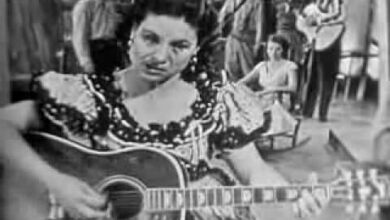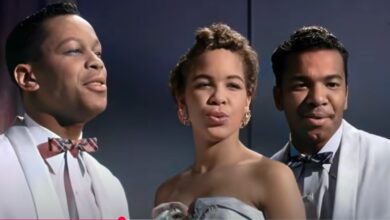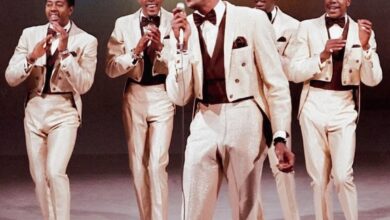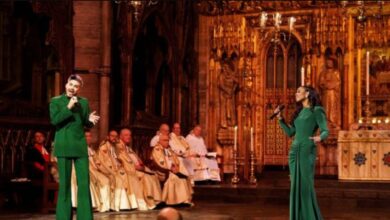Daydream Believer: The Monkees’ Journey to Pop Perfection and Timeless Legacy
In the vibrant musical landscape of the late 1960s, few songs encapsulated the era’s blend of optimism and introspection like “Daydream Believer” by The Monkees. Released in 1967, this track not only became a chart-topping hit but also solidified its place as a timeless anthem, reflecting the band’s unique journey from television stars to legitimate musical artists.
The Monkees were conceived in 1965 as a made-for-television band, aiming to emulate the success of The Beatles. The original lineup featured Micky Dolenz, Michael Nesmith, Peter Tork, and Davy Jones. Each member brought a distinct personality and talent to the group, creating a dynamic that resonated with audiences both on-screen and through their music.
“Daydream Believer” was penned by John Stewart, a former member of the Kingston Trio. Interestingly, Stewart considered the song a minor work, never anticipating its monumental success. The song was initially turned down by other artists before finding its home with The Monkees, a twist of fate that would prove serendipitous for both the band and the songwriter.
The recording session for “Daydream Believer” was marked by its own set of challenges. Davy Jones, who provided the lead vocals, reportedly felt frustrated during the process, leading to a vocal delivery that carries a subtle edge. This nuance added depth to the song’s cheerful melody, hinting at the complexities beneath its surface.
Peter Tork’s contribution to the track is particularly noteworthy. He crafted the iconic piano introduction, a melody that has since become instantly recognizable. Tork’s classical training and musical versatility shone through in this piece, adding a layer of sophistication to the pop tune.
Upon its release, “Daydream Believer” soared to the top of the Billboard Hot 100 chart, securing the number one spot in December 1967 and maintaining it for four weeks. This achievement marked The Monkees’ third and final chart-topping single in the U.S., cementing their place in pop music history.
The song’s success was not confined to the United States. Internationally, it resonated with audiences, reaching impressive chart positions in multiple countries. Its universal appeal lay in its catchy melody and relatable lyrics, which spoke to the dreamer in everyone.
“Daydream Believer” was featured on The Monkees’ album “The Birds, The Bees & The Monkees,” released in 1968. This album marked a period of transition for the band, as they sought greater creative control over their music amidst internal and external challenges.
The Monkees’ journey from a manufactured television band to genuine musical artists was fraught with obstacles. Initially, they faced criticism for not playing their own instruments on early recordings, a decision made by producers to ensure polished performances. However, the band members were determined to prove their musical prowess.
In 1967, The Monkees took a bold step by asserting their desire to play their own instruments and have a say in their musical direction. This move led to the creation of the album “Headquarters,” where they showcased their talents as musicians and songwriters, challenging the industry’s preconceived notions about them.
Despite their efforts, internal tensions began to surface. Each member had distinct musical preferences, leading to divergent creative paths. Michael Nesmith gravitated towards country-rock, Peter Tork leaned into folk and classical influences, Micky Dolenz embraced rock and soul, while Davy Jones favored Broadway-style pop.
These differences, coupled with the pressures of fame and a grueling schedule, eventually led to Peter Tork’s departure from the band in 1968. His exit marked the beginning of a period of decline for The Monkees, as they struggled to maintain their earlier momentum amidst changing musical landscapes.
However, the legacy of “Daydream Believer” endured. The song experienced a resurgence in popularity in 1986, when three of the original members reunited for a successful tour. This revival introduced the classic hit to a new generation, proving its timeless appeal.
Over the years, “Daydream Believer” has been covered by various artists, each bringing their unique interpretation to the song. Notably, Anne Murray’s 1979 rendition became a hit in its own right, reaching significant positions on both country and pop charts.
The enduring charm of “Daydream Believer” lies in its blend of cheerful melody and introspective lyrics. It captures a sense of nostalgia and the bittersweet realization that dreams and reality often intertwine in unexpected ways.
For The Monkees, the song represents a pinnacle of their artistic journey—a testament to their ability to create music that transcends its origins and continues to resonate with listeners across generations.
In reflecting on “Daydream Believer,” one can’t help but appreciate the serendipitous convergence of talent, timing, and tenacity that brought this classic to life. It’s a reminder that even in the manufactured world of television, genuine artistry can emerge, leaving an indelible mark on the cultural landscape.
As we listen to “Daydream Believer” today, it serves as both a time capsule of the 1960s and a timeless ode to the dreamer in all of us—a song that invites us to embrace our daydreams while navigating the realities of life.



